In honor of George Washington’s birthday in February, this Travel post will be about the Washington Monument located on the National Mall in Washington, D.C. The Washington Monument was built to commemorate the first President of the United States and it measures 555 feet 5 inches tall making it the world’s tallest obelisk.
Shortly after his death in 1799, Congress authorized the building of a memorial to George Washington in the newly built national capital. The public greatly admired Washington for his military service during the American Revolution and for his political service to the newly formed country that had recently fought for their independence from Britain. Washington was such a strong force in the Federalist Party and the Democratic-Republican Party, which had gained control of the Congress in 1801, opposed building the monument. Eventually in 1832 the project started to move forward when the Washington National Monument Society was formed. By 1836 funds were raised and a design competition was announced. The architect chosen was Robert Mills and the design he proposed was an obelisk, a four sided tall pillar, with a flat top. Surrounding the structure would be a circular colonnade which would be topped with a majestic statue of Washington standing on a chariot and in addition there would be 30 more statues of Revolutionary War heroes. It was an ambitious plan and the elaborate memorial would be a very expensive to construct so the committee decided to start by building only the obelisk.
The original site of the monument was moved when the area proved to be unstable and could not hold the weight of the finished structure. Construction on the monument started in 1848 with the laying of the cornerstone at the northeast corner of the memorial in a special Fourth of July ceremony. The 24,500 pound marble cornerstone measures 2.5 feet high by 6.5 feet square and was set into the foundation in a solemn ceremony using George Washington’s Masonic gavel. Within the cornerstone was a hole which was large enough for a zinc case that was filled with special memorabilia pertaining to both George Washington and the city of Washington, D.C. There were 73 items such as the design plans for the memorial, 71 newspapers and other publications, several sets of coins, and a bible.
Unfortunately, the construction of the memorial came to a halt in 1854 due to problems with the committee, lack of funds and the start of the Civil War. At that time the monument had only reached a height of 152 feet when the project was abandoned for the next few years. When construction resumed after the war, there was a distinctive difference in the shading of the marble of the obelisk.
The monument was completed in 1884 and the top design was changed from a flat one to a pointed one. The uppermost top piece (the pyramidion or captstone) is made of 100 ounces of aluminum which acted as the original lightning rod for the monument, at the time aluminum was a rare metal which was as valuable as silver. The four panels of the capstone are etched with several different inscriptions, one of them reads “Laus Deo” meaning Praise be to God. A wide copper band encircles the bottom of the uppermost top piece and holds eight vertical lightning rods. The capstone also has a large hole at the base where a 1.5 inch diameter copper rod can be attached as part of the lightning rod system.
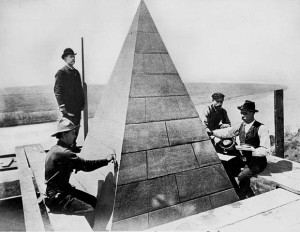
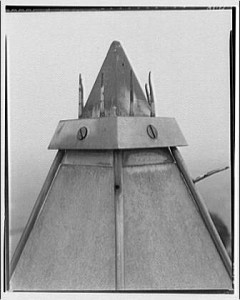
During the course of the building of the monument all 50 states, several individual cities, foreign countries, organizations and even some individuals contributed almost 200 memorial stones that have been incorporated into the east and west interior walls of the structure. The memorial stones are made of a variety of materials; such as marble, granite, limestone and sandstone. Some more unique materials include one made of copper from Michigan, petrified wood from Arizona and jade from Alaska. The memorial stones also range in size from small 1.5 feet square blocks to larger ones measure about 6 feet by 8 feet. (Travel Note: The memorial stones can be viewed from various locations within the Washington Monument)
Located at the base of Washington Monument and evenly spaced around the 260 foot diameter circle are fifty 25 foot tall aluminum flag poles which fly the American flags and represent the 50 states. In the past, the flags were removed and stored overnight but since 1971 the flags remain on display 24 hours a day.
Most recently, in August 2011 the Washington Monument sustained damage from an earthquake that had an epicenter in nearby Virginia. Engineering firms were brought in to assess the monument and the decision was made to close access until the extent of the damage could be determined. The pyramidion was dislodged and there was a 4 foot long crack, several pieces of stone and mortar had fallen within the interior, the elevator was damaged and not functioning properly and there were additional cracks on the exterior of the monument.
In July 2012, the National Park Service announced the monument closure for extensive repairs that would take two years to complete. A portion of the plaza at the base of the monument was removed to allow better access to build scaffolding around the exterior for the renovation project. The NPS reopened the Washington Monument when the repairs were completed in May 2014.
The Washington Monument is one of the most popular sites for visitors to Washington, D.C. Visitors have come to climb the 898 stairs for spectacular views over the city and eventually the service elevator, which was originally used to carry building materials during the construction of the monument, now carries visitors to the top. The monument was listed on the National Register of Historic Places on October 15, 1966. The National Park Service administrates the Washington Monument as well as other historic sites within in the city of Washington, D.C. For more detailed information about planning a visit to the Washington Monument, including ticket information, please see the National Park Service website at www.nps.gov/wamo

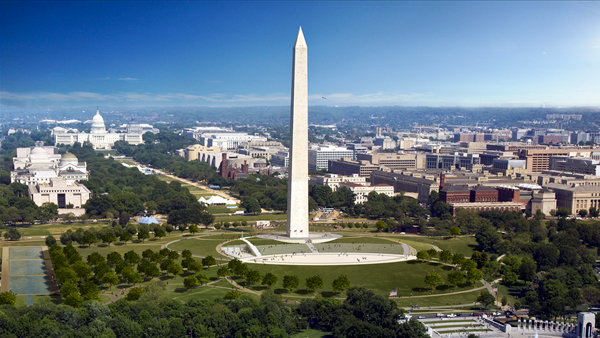

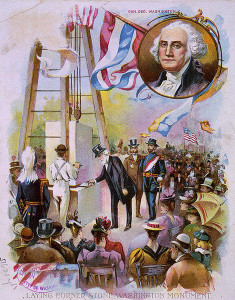
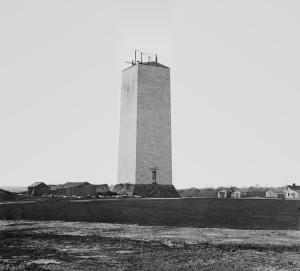
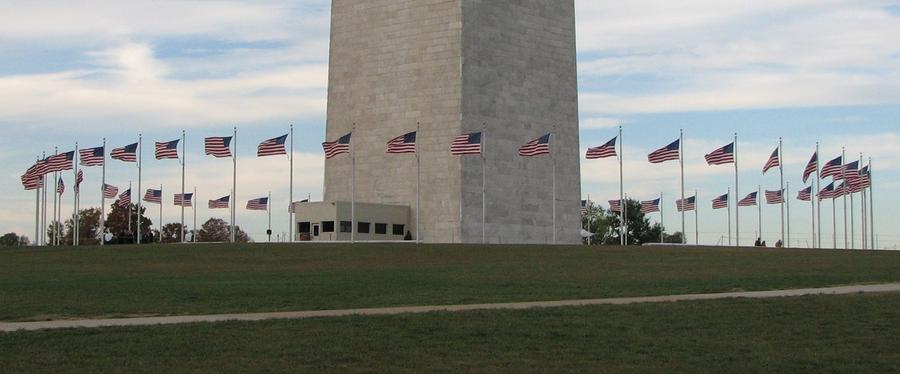
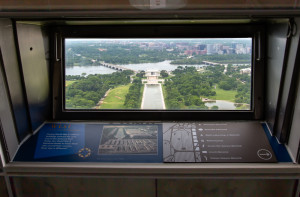
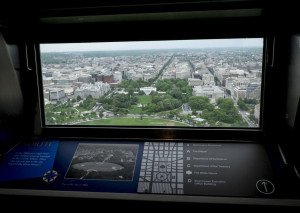

Is there any way of determining the names of all who built the monumnt?
Unfortunately I do not have any information on your question – I would suggest maybe contacting the National Park Service or perhaps a search through the National Archives